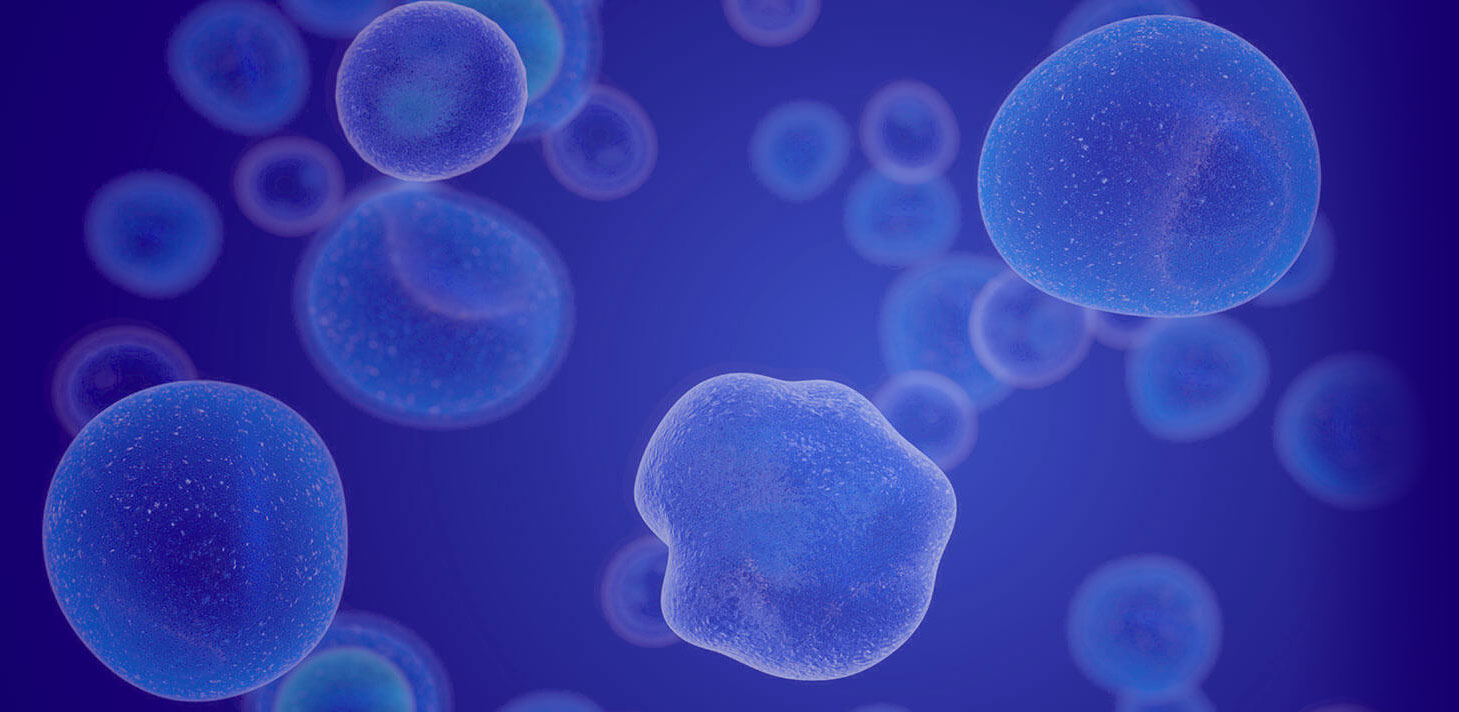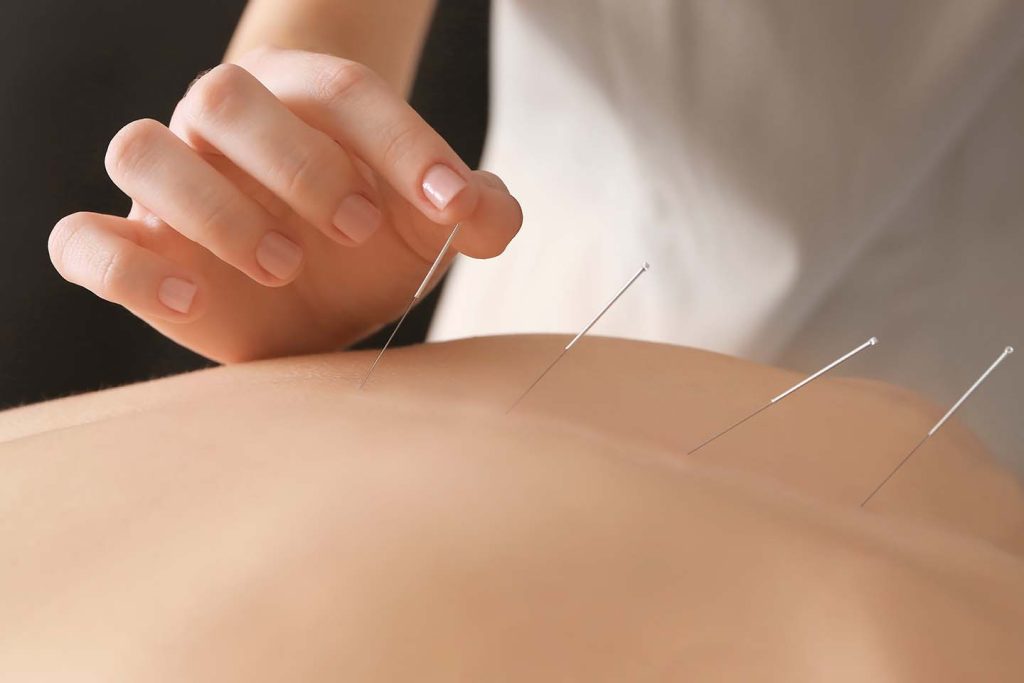Medical acupuncture is an adaptation of traditional acupuncture that uses current knowledge of anatomy, physiology, pathology, and the principles of evidence-based medicine. Medical acupuncture is performed by a doctor trained and licensed in Western Medicine but who has also received formal training in acupuncture. Medical acupuncture can be integrated into a wide array of medical treatments and today, it is practiced worldwide. [1]
Daisy Medical Acupuncture is a medical-based practice offering a holistic approach to improving your health. Dr. John Haasis uses acupuncture in conjunction with Stem Cell Therapy and Regenerative Medicine to accelerate results; he founded Daisy Acupuncture on the belief in rejuvenation and new beginnings. The daisy embodies vitality, creativity, sincerity, beauty, and positivity, which we embrace in every therapeutic modality we offer our patients. Daisy Acupuncture uses the complementary discipline of medical acupuncture to treat various pain problems.
Let us show you how Daisy can change your life and lead you down a path of health and wellness. We manage and treat various acute and chronic health issues, specializing in musculoskeletal pain. We are conveniently located to serve the areas of Greenville, SC, Spartanburg, SC, Columbia, SC, Anderson, SC, Asheville, NC, and Gastonia, NC. Call (864) 775-5682 or fill out our form to make an appointment.
If you want to learn more about Dr. Haasis’s practice, follow The Daisy Effect for information about acupuncture, stem cell therapy, and more.
Contents
Conditions Treated By Medical Acupuncture
Medical acupuncture is a system of treatment that can positively impact health and wellness; it can prevent diseases and treat many medical problems. Medical acupuncture is effective as a primary treatment modality or adjuvant to other medical interventions.
The World Health Organization recognizes the use of acupuncture to treat an array of medical problems [2], including:
- Digestive disorders: Gastritis, spastic colon, IBS, constipation, and diarrhea.
- Respiratory conditions: Sinusitis, asthma, sore throats, bronchitis, and recurrent infections.
- Psychological conditions: Stress, anxiety, depression, PTSD, drug dependence, insomnia, smoking cessation, and weight loss.
- Rheumatological conditions: Rheumatoid Arthritis and osteoarthritis.
- Neurological disorders: Headaches, stroke, CRPS, MS, Parkinson’s disease, Neuropathy, and carpal tunnel.
- Musculoskeletal conditions: Fibromyalgia, neck pain, back pain, knee pain, shoulder pain, hip pain, elbow pain.
- Urinary, menstrual, and fertility disorders.
How Does Acupuncture Work?
While some aspects of acupuncture may reflect ancient Chinese medicine, there is very little evidence showing that acupuncture was widely used in ancient China, [3] most likely because the materials available to create needles were limited. Herbal remedies were far more common. Additionally, ancient Chinese doctors understood the risk of infection and were punished if complications occurred! Ancient acupuncture needles were made of stone, bamboo, fish bones, bronze, gold, and silver. Some excavated ancient needles had a diameter of more than a millimeter wide – ouch! [1][2] Ancient acupuncture was very different from the “New Acupuncture” that began to be practiced in 1954, and developed as a way to incorporate traditional Chinese practices into modern medicine at the behest of Chairman Mao. Developments in the stainless steel industry in the twentieth century allowed for further refinement of the needles, and the creation of the hair-like, filiform needles used today. Modern acupuncture relies on an advanced understanding of anatomy and physiology as well as the ancient Chinese understanding of the body’s vital energy, also called Qi (pronounced “chee”).
Acupuncture encourages the body to promote natural healing and improve function by placing fine needles at precise acupuncture points. Anatomically, acupuncture points have been reported to correspond to areas of high electrical conductivity in the skin that differ from adjacent points on the body. Many theories explain how the application of these needles in these areas works. [1]
Gate Control Theory of Pain
This theory suggests that specific nerve fibers transmit a pain signal to the brain via the spinal cord. Acupuncture is thought to temporarily stimulate inhibitory nerve fibers, reducing the pain signal transmission and relieving the patient.
Endorphin Model
The release of internal (endogenous) endorphins is isolated in the central nervous system (CNS). Clinical studies dating back to the 1970s reported that inserting acupuncture needles into specific points on the body triggered the production of endorphins in cerebrospinal fluid.
Neurotransmitter Model
Research shows that acupuncture can modulate serotonin levels and neurotransmitters, so this model proposes that acupuncture might be an effective treatment for depression, anxiety, and depression.
Other Theories
Other theories postulate that acupuncture indirectly influences our autonomic (involuntary) systems like respiration, heart rate, blood pressure, circulation, and immune function. In addition, research shows that increased electrical conductivity of tissues at acupuncture points may modulate the transmission of specific signals in the body.
What is Qi?
Medical acupuncture embodies our current understanding of neuromuscular anatomy while embracing the traditional Chinese notion of a subtle circulation network of a vivifying force called Qi, or vital energy. According to this tradition, Qi animates the mind and body. It protects us from illness and disease, so our health depends on Qi’s quality, quantity, and balance. In classical Chinese terms, Qi flows via specific pathways through and over the body’s surface.
Meridians, or energy channels, flow like rivers through the body to nourish every living cell, organ, gland, and tissue. [2] An obstruction in the movement of these “energy rivers” or blockage of the flow of Qi can be detrimental to one’s health and manifest as illness, pain, or disease. The flow of energy through the meridians can be influenced by “needling” acupuncture points.
The needles unblock the obstruction and re-establish regular energy flow, which can assist the body’s internal organs in correcting and improving imbalances in digestion, absorption, and energy metabolism. Although acupuncture was developed to prevent illness, it also helps manage disease symptoms by re-establishing the body’s balanced flow of Qi. [1]
Why Use Needles?
The contemporary scientific explanation is that “needling” acupuncture points stimulate the peripheral and central nervous system to release chemicals in the surrounding tissues, including muscle, spinal cord, and brain. These active chemicals play an essential role in pain modulation and perception. In addition, a cascade of neurotransmitters, vasoactive peptides, and hormones are released, which influence the body’s internal system of checks and balances.
Are Acupuncture Needles Safe?
Modern acupuncture needles are made of solid surgical stainless steel; they are strong yet thin and flexible. In America, single-use, disposable needles are packaged and sealed by the manufacturer in sterile conditions so that patients can expect the same safety level as any other medical tool. [1] Acupuncture needles range from 32 to 36 gauge – 0.2 to 0.13 millimeters in diameter. To offer a concrete example of how today’s needle sizes differ from those of ancient times: one millimeter, the size of unearthed ancient needles, is about the diameter of the sharpened tip of a pencil. Modern needles are similar to the width of a strand of hair – quite a difference!
The other consideration for the safety of acupuncture is the depth at which the needles are inserted. There is a control point, the depth of which is not passed during proper acupuncture needle insertion.
What is Needling?
Needling occurs after the needle is inserted into the skin. Often, to increase efficacy, “needling” or a gentle manual twisting back and forth and slight movement up and down takes place; heat can also increase the effectiveness of the treatment. Some studies suggest that electroacupuncture accelerates the results of stem cell therapy. With this modality, a low-intensity electric current may be connected to a pair of needles to provide another form of needle stimulation. [1]
Does Acupuncture Hurt?
Acupuncture treatment comes with minimal or no discomfort. The most common sensation associated with acupuncture needle insertion is a slight pinch followed by light pressure or heaviness and warmth as the needle reaches its control point. [1] Most patients report feeling a sense of relaxation and well-being after an acupuncture session with Dr. Haasis.
How Many Acupuncture Sessions Will I Need?
The number of acupuncture sessions each patient needs to see their desired results depends on the patient and the reason for treatment. Some patients will see improved symptoms after the first session, while others could need 6 to 12 sessions. Additionally, all patients should return periodically for maintenance to sustain the long-term effects of treatment. Each treatment session lasts thirty minutes to an hour, and the needles will stay in the acupuncture points for ten to twenty minutes. Patients will be monitored closely to ensure they are taking well to treatment.
Am I a Candidate for Acupuncture?
Because acupuncture is such a versatile treatment, patients will best determine their candidacy by scheduling an appointment with Dr. Haasis at Daisy. During your consultation, Dr. Haasis will discuss your reason for seeking acupuncture before completing a focused physical examination. Then, after gathering the pertinent information, a treatment plan is established. Therefore, it is important to share every detail of your health history with Dr. Haasis during your consultation, particularly if you:
- Have a bleeding disorder, or if you are taking blood thinners.
- Have a pacemaker. (Only applicable to electroacupuncture.)
- Are pregnant. [1]
To schedule your consultation, call (864) 775-5682, or fill out this form, and we will get back to you shortly.
The Procedure
There is no preparation necessary for acupuncture treatment. Acupuncture points are located all over the body, and often, the point of needle insertion is far removed from your area of pain. Dr. Haasis will explain everything in detail and inform you whether you’ll need to wear a gown in order for him to access your treatment sites. Then, when you are ready, Dr. Haasis will invite you to lie back on a comfortable padded table for treatment:
- Acupuncture needles are inserted at strategic points throughout your body – a typical treatment uses five to twenty needles.
- Dr. Haasis may gently manipulate the inserted needles once they reach their control point with manual, heat, or mild electrical pulses.
- The needles will remain in place for ten to twenty minutes while you relax. Removing the needles does not typically cause any discomfort.
Patients may feel relaxed or energized after treatment. There is no downtime or recovery after treatment.
What is the Cost of Acupuncture in The Carolinas?
The cost of your acupuncture treatment with Dr. Haasis will depend on how long your session is and how many treatment sessions you need. Schedule your consultation to find out more about the cost and how this modern take on traditional Chinese medicine can change your life!
To schedule your consultation, call (864) 775-5682, or fill out this form, and we will get back to you shortly.
References
- Chon TY, Lee MC. Acupuncture. Mayo Clinic Proceedings. 2013;88(10):1141-1146. doi:10.1016/j.mayocp.2013.06.009
- Sierpina VS, Frenkel MA. Acupuncture: A Clinical Review. Southern Medical Journal. 2005;98(3):330-337. doi:10.1097/01.smj.0000140834.30654.0f
- Lehmann H. Acupuncture in ancient China: How important was it really? Journal of Integrative Medicine. 2013;11(1):45-53. doi:10.3736/jintegrmed2013008



